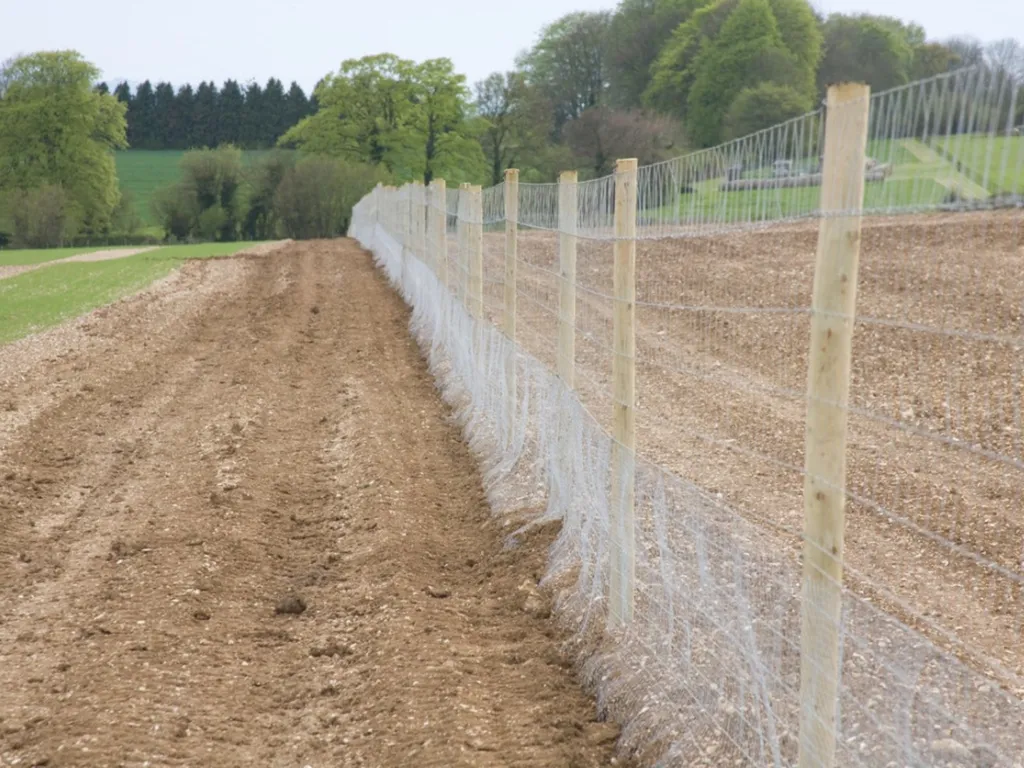
The occasional deer can wreak havoc on your tender garden plants. They will even girdle trees by stripping the bark from the trunk which can damage the health of the plants. A deer proof garden fence needs to be high enough to prevent the animals from jumping over and visible enough to surmount their poor depth perception. If repellents aren’t working, read up on deer fence installation and think about building a deer proof fence.
The Rules on Deer Fences
Deer can be a nuisance in gardens when they start eating valuable plants. Many deer fencing options found online are either expensive, unattractive, or require special skills to set up. Simple solutions like single-strand electric fences or deer mesh can work, but for areas with lots of deer, more complex measures like multiple-line electric fences or tall wooden fences (8 to 10 feet tall) are better, although they take more time and money to install. Understanding deer behavior is important; they can jump up to 8 feet high and are not deterred by common remedies like human hair or chemical sprays. Fences with lower wire lines or netting can also work but should be angled to stop deer from pushing through. Watching how deer behave—whether they jump over obstacles or sneak around them—will help decide whether electric, netting, or permanent wood or wire fencing is best for keeping them out of gardens without spending too much money.
Basic Deer Fencing Designs
Setting up a single strand electric fence is straightforward. After installing the wire, secure it to concrete-set posts spaced about 5 feet apart. This type of fence is effective in areas with few deer. Position the wire about 30 inches off the ground and use bright tape at intervals to make it visible. You can deter deer by spreading peanut butter on aluminum foil attached to the fence. When a deer touches the wire, it receives a mild shock and learns to avoid the area. Another common method is using deer netting, accompanied by streamers to alert deer and prevent them from running into the fence. Wire fencing is also a viable choice, installed on sturdy metal posts at a height that deters jumping.
How to Build a Deer Proof Fence That Lasts
Creating an attractive deer-proof fence requires more investment in terms of time and money compared to wire, netting, or single strand electric options. In areas with high deer populations, consider using multiple electric wires placed at different heights (10, 20, and 30 inches from the ground) to deter them effectively. For particularly crafty deer, setting up two electric fences can be even more effective: one inner fence at 50 inches from the ground and an outer perimeter at 38 inches, with strands set at 15 and 43 inches. A wooden fence, while aesthetically pleasing, is a significant commitment and can be costly. It should be at least 8 feet tall. If you already have a standard 6 to 8-foot fence, enhance it by adding height to the posts and stringing wire across the top to prevent jumping. Ensure the wooden fence is solid and doesn’t allow deer to see through it, as the mystery of what’s on the other side can also act as a deterrent.
Conclusion
Implementing effective deer-proof fencing requires thoughtful consideration based on the local deer population and their behavior. While simple options like single-strand electric fences or deer netting may suffice in areas with fewer deer, regions with higher deer concentrations necessitate more elaborate measures such as multiple electric wires set at strategic heights or the construction of sturdy wooden fences at least 8 feet tall. These methods, although requiring more time and investment, can significantly reduce deer damage in gardens and landscapes, providing a lasting solution to protect valuable plants and trees. Understanding deer behavior and choosing the appropriate fencing method accordingly will ultimately contribute to a successful defense against deer intrusion.




